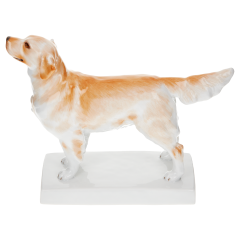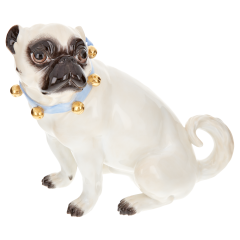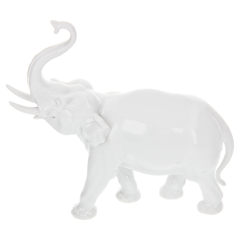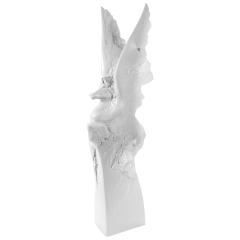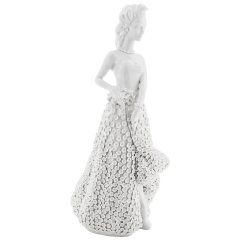Christmas Offer from MEISSEN – Enjoy Exclusive Savings! Learn More.
Skip to Content
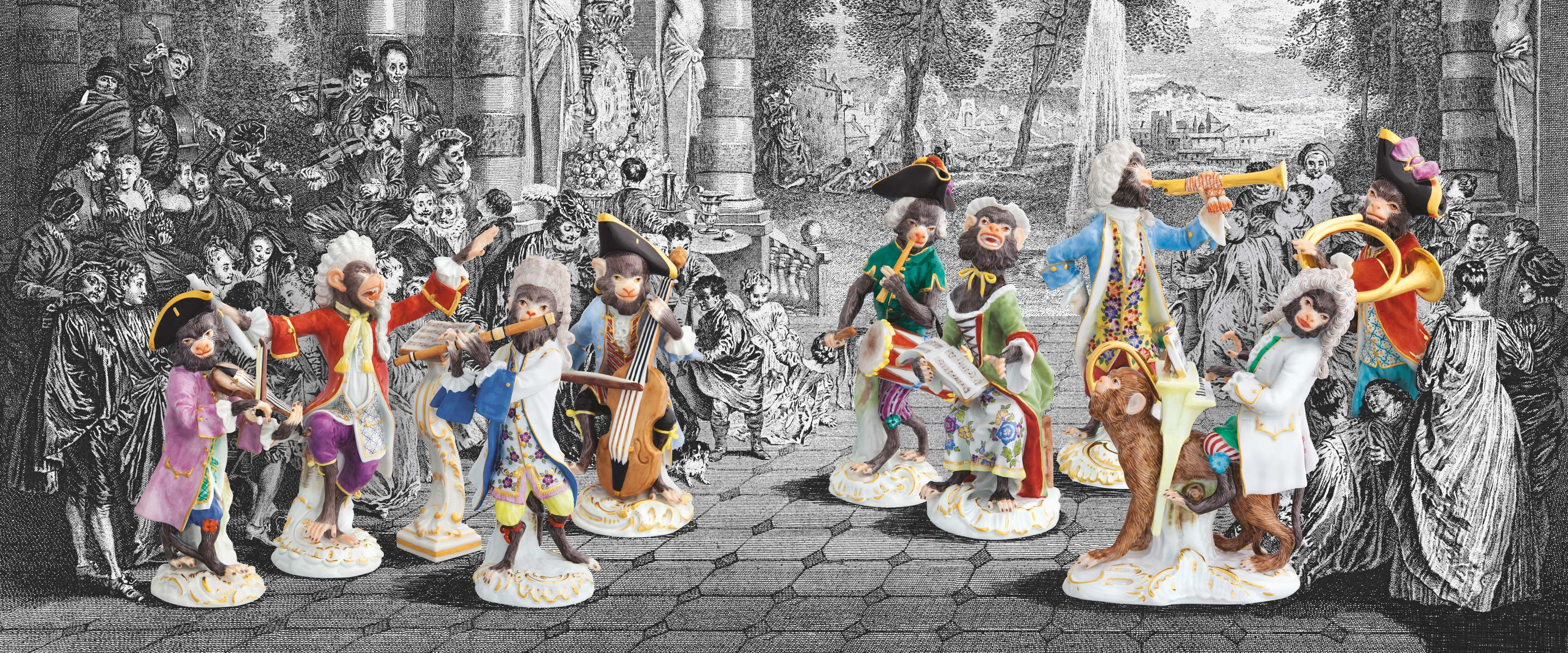
Figurines

The Meissen mould archives safeguard some 9.000 moulds spanning three centuries, making this the heart of the manufactory’s tradition. The rich variety represented here has its roots in the creativity of Meissen artists during the 18th century. In 1730, the manufactory entered what has been dubbed its sculptural period, when the artistic focus shifted from utility pieces following East Asian archetypes to large-scale sculptures, spurred by Augustus the Strong and his mission to transform Dresden’s Japanese Palace into a bedecked porcelain estate. The name Johann Joachim Kaendler is closely tied to this period. The modeler came to Meissen in 1731 and quickly made a name for himself with his life-sized animal sculptures. Kaendler’s dedicated himself to fulfilling the grandiose demands of the royal court, creating numerous epochal pieces in rapid succession that redefined the potential of porcelain as an artistic medium.
At the end of the 1830s, the Rococo style began to influence the works of the manufactory. Porcelain sculptures became smaller, without forfeiting any artistic character. Table decorations, until then made from sugar or marzipan, were increasingly supplanted by longer-lasting porcelain figurines. Originally, these sculptures were inspired primarily by religious or mythical themes or life in the royal courts, but by the middle of the 18th century these were gradually replaced by more folkloric subjects. Entire series were created depicting craftsmen, miners, farmers and beggars. The figures created at this time were not only trailblazing examples taken up by other European manufactories, but also involved new techniques and motifs that are still evident in MEISSEN pieces to this day – from Walter Schott’s Art Nouveau “Boule Player” and Max Esser’s “Otter” to the 21st-century works created by Jörg Danielczyk. Thanks to the preservation efforts of the mould archive, the majority of Meissen’s original models have survived intact to this day, enabling historic figures to be brought back to life again and again.
-
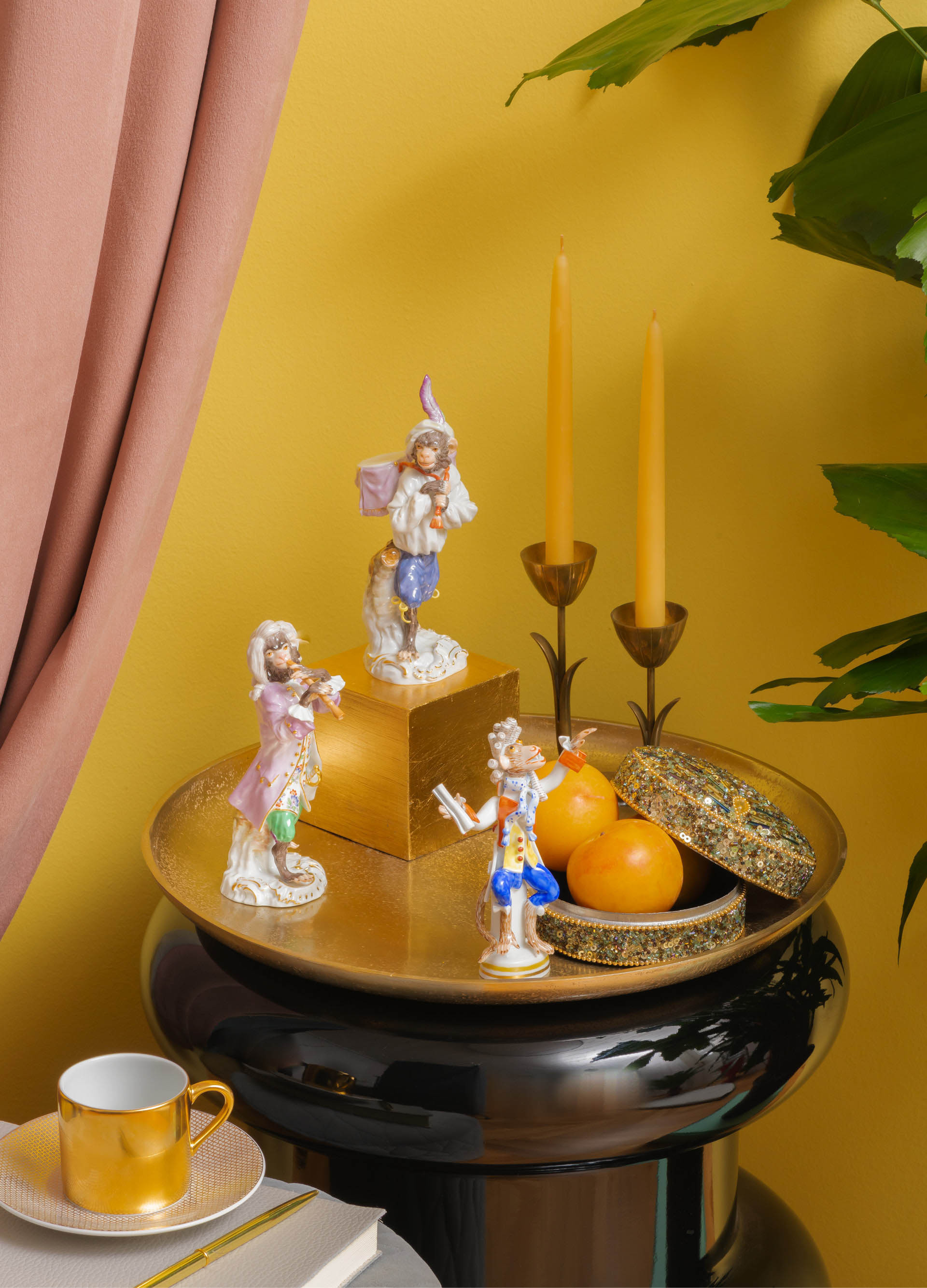 Collection FigurinesMeissen collectibles have their beginnings in the elevated dining culture of the 18th century. Figurines made from sugar, marzipan or gum tragacanth were a must on the painstakingly decorated dining tables of aristocratic homes, lending a backdrop of subtle satire, hidden humor and secret messages to every feast. With the invention of hard-paste porcelain in the mid-18th century, Meissen craftsmen usurped the confectioners, creating elaborate table decorations with a much longer life span than their predecessors. Porcelain figurines soon found a place in the vitrines of every prosperous home. This rise in demand sparked an unprecedented wealth within Meissen’s thematic repertoire. The porcelain cabinets and collections soon started to grow and become increasingly curated to fit certain themes. The passion for collecting Meissen porcelain figurines was born that carries on to this day.
Collection FigurinesMeissen collectibles have their beginnings in the elevated dining culture of the 18th century. Figurines made from sugar, marzipan or gum tragacanth were a must on the painstakingly decorated dining tables of aristocratic homes, lending a backdrop of subtle satire, hidden humor and secret messages to every feast. With the invention of hard-paste porcelain in the mid-18th century, Meissen craftsmen usurped the confectioners, creating elaborate table decorations with a much longer life span than their predecessors. Porcelain figurines soon found a place in the vitrines of every prosperous home. This rise in demand sparked an unprecedented wealth within Meissen’s thematic repertoire. The porcelain cabinets and collections soon started to grow and become increasingly curated to fit certain themes. The passion for collecting Meissen porcelain figurines was born that carries on to this day.
“Era for era, Meissen’s figurines have had a formative influence on the style and development of European porcelain sculptures.”
-
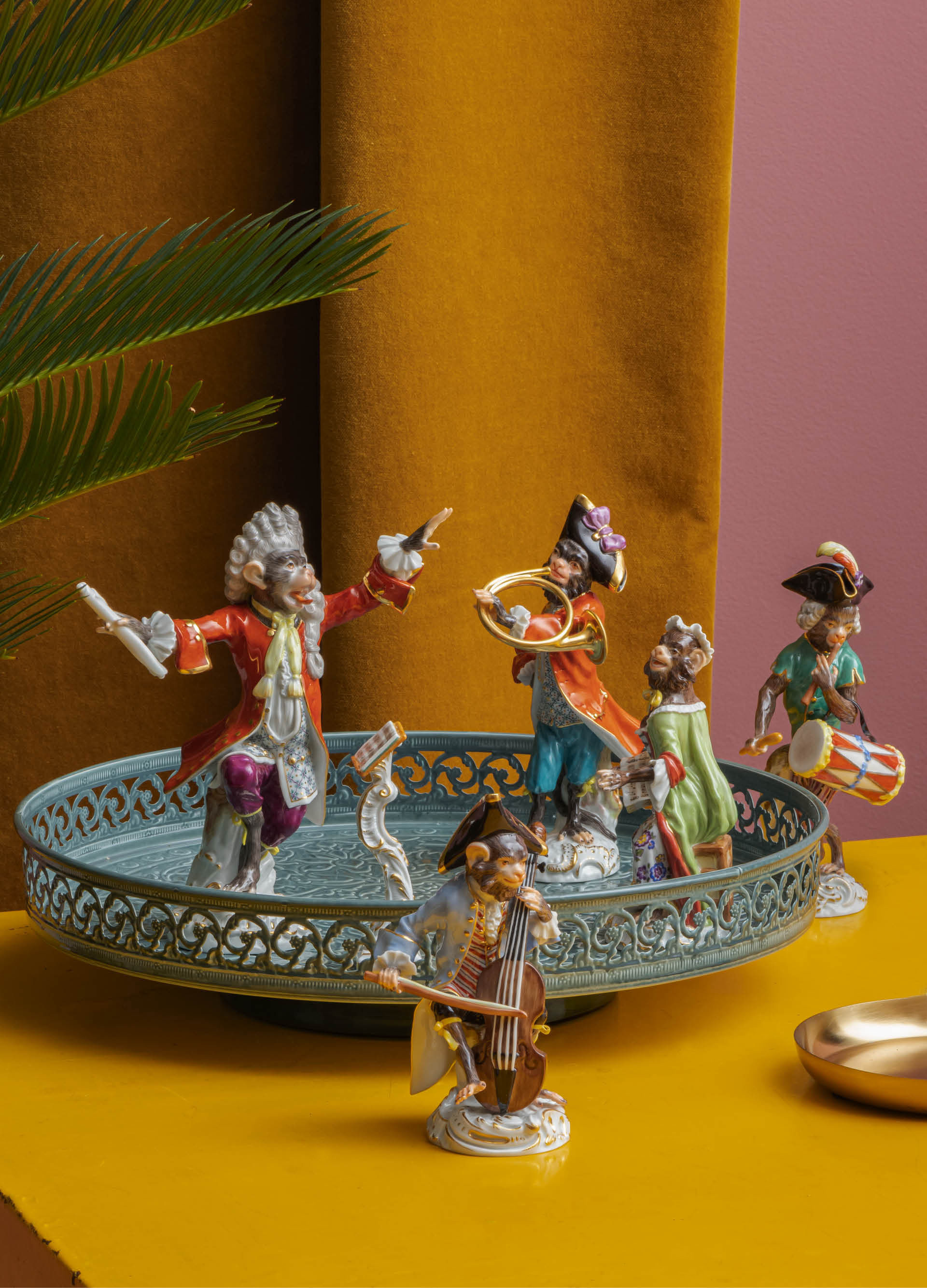 Monkey OrchestraDesigned by master modeler Johann Joachim Kaendler in the middle of the 18th century, the “Monkey Orchestra” is an outstanding example from Meissen’s Baroque era. Popular in France at that time, the singerie genre depicts fashionably dressed monkeys imitating human behavior in a satirical manner. Entire rooms could be decorated with these comical scenes, from the walls, upholstery fabrics and carpets all the way to the porcelain. Modeled after drawings from famed French singerie artist Christophe Huet, the “Monkey Orchestra” is an ensemble of Rococo-outfitted primates, produced with elaborate craftsmanship and painted in rich detail. The earliest of these figurines quickly made their way from the Meissen kilns straight to Paris, where Madame de Pompadour, mistress to King Louis XV, was one of the first recipients of the collection in 1753.
Monkey OrchestraDesigned by master modeler Johann Joachim Kaendler in the middle of the 18th century, the “Monkey Orchestra” is an outstanding example from Meissen’s Baroque era. Popular in France at that time, the singerie genre depicts fashionably dressed monkeys imitating human behavior in a satirical manner. Entire rooms could be decorated with these comical scenes, from the walls, upholstery fabrics and carpets all the way to the porcelain. Modeled after drawings from famed French singerie artist Christophe Huet, the “Monkey Orchestra” is an ensemble of Rococo-outfitted primates, produced with elaborate craftsmanship and painted in rich detail. The earliest of these figurines quickly made their way from the Meissen kilns straight to Paris, where Madame de Pompadour, mistress to King Louis XV, was one of the first recipients of the collection in 1753. -
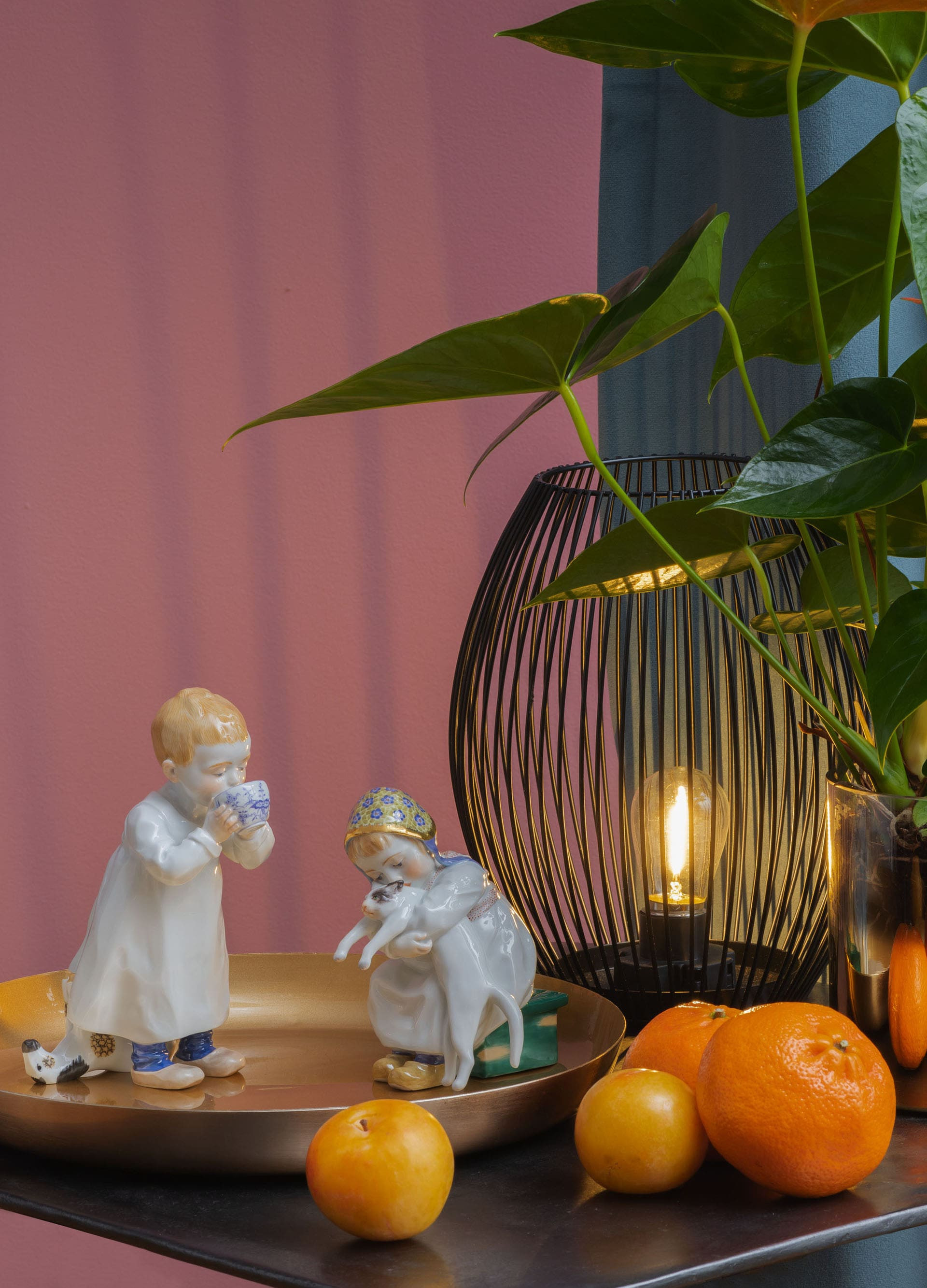 Hentschel ChildrenCreated from 1904-1907, the “Hentschel Children” by the Art Nouveau artist Julius Konrad Hentschel marked a turning point in the sculptural productions of the Meissen manufactory. The figures’ expression, style, and subject matter was completely novel at that time. With their individuality and liveliness, Hentschel’s creations depicted children in scenes of everyday life: boys and girls in simple clothing, engrossed in play with their doll, dog, hobby-horse or with one another. Each is rendered down by hand to the most elaborate detail and painted. The “Hentschel Children”, as they became known, were originally created as components in desk sets for decorating the tabletop. In his completely unique style, the Art Nouveau master captured fascinating moments of liveliness and youth.
Hentschel ChildrenCreated from 1904-1907, the “Hentschel Children” by the Art Nouveau artist Julius Konrad Hentschel marked a turning point in the sculptural productions of the Meissen manufactory. The figures’ expression, style, and subject matter was completely novel at that time. With their individuality and liveliness, Hentschel’s creations depicted children in scenes of everyday life: boys and girls in simple clothing, engrossed in play with their doll, dog, hobby-horse or with one another. Each is rendered down by hand to the most elaborate detail and painted. The “Hentschel Children”, as they became known, were originally created as components in desk sets for decorating the tabletop. In his completely unique style, the Art Nouveau master captured fascinating moments of liveliness and youth. -
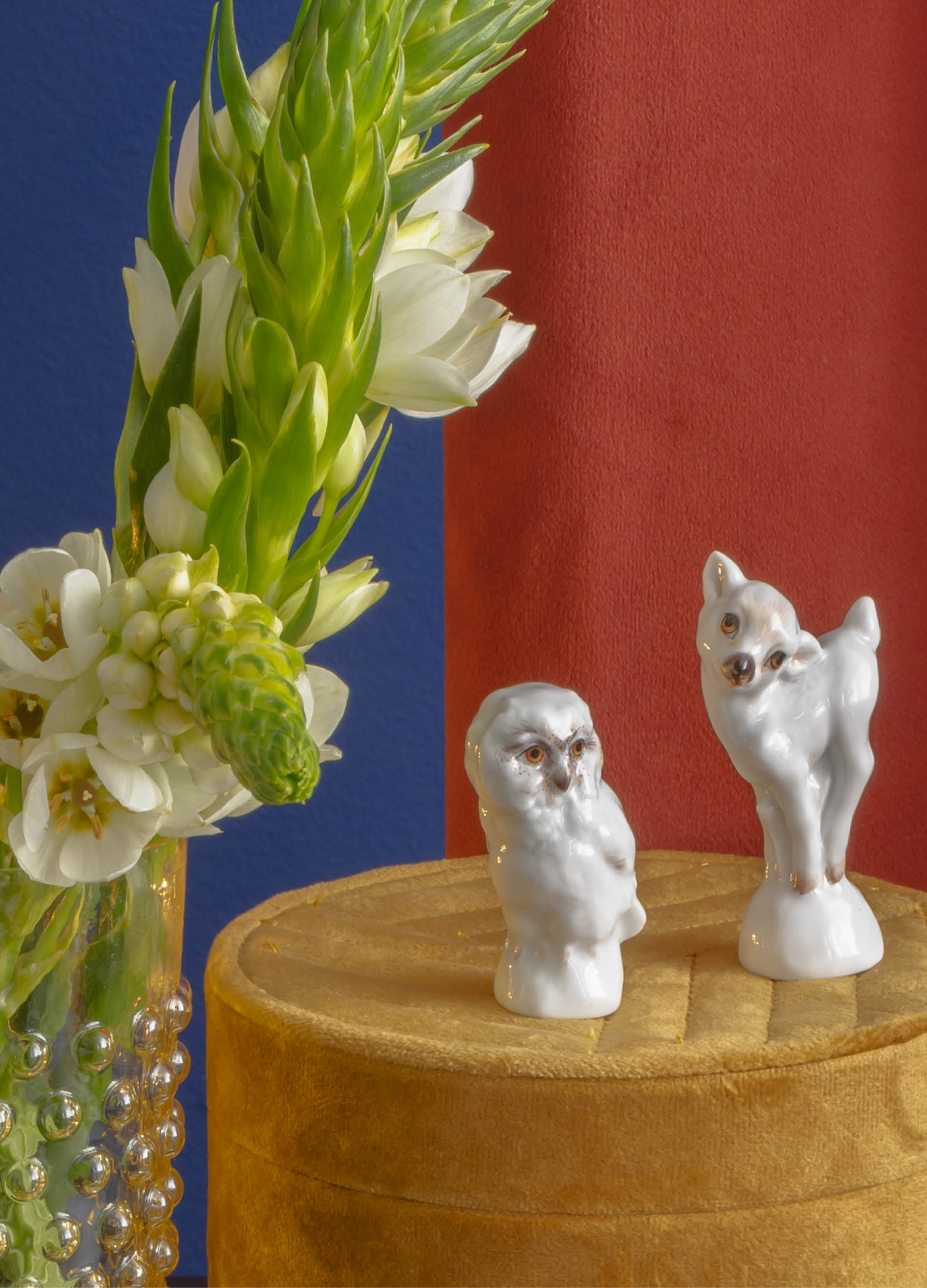 Young AnimalsWith the “Young Animals” collector’s series, MEISSEN presents 15 miniatures produced in rich detail that purposefully depart from the manufactory’s seasoned tradition of naturalistic animal depictions. The animal figures are imbued with a stylized diminutiveness, painted by hand in subtle palettes of pastel tones. Characteristic traits of the monkey, hare, cat, and dog are emphasized with fine strokes of the brush, applied with a restrained hand to allow the shimmer and brilliant lustre of the Meissen Porcelain to play a part in the design. The colours and shapes work together to guide the attention to the large, particularly expressive eyes of each animal, which communicate the soft, childlike character of this unique collector’s series.
Young AnimalsWith the “Young Animals” collector’s series, MEISSEN presents 15 miniatures produced in rich detail that purposefully depart from the manufactory’s seasoned tradition of naturalistic animal depictions. The animal figures are imbued with a stylized diminutiveness, painted by hand in subtle palettes of pastel tones. Characteristic traits of the monkey, hare, cat, and dog are emphasized with fine strokes of the brush, applied with a restrained hand to allow the shimmer and brilliant lustre of the Meissen Porcelain to play a part in the design. The colours and shapes work together to guide the attention to the large, particularly expressive eyes of each animal, which communicate the soft, childlike character of this unique collector’s series. -
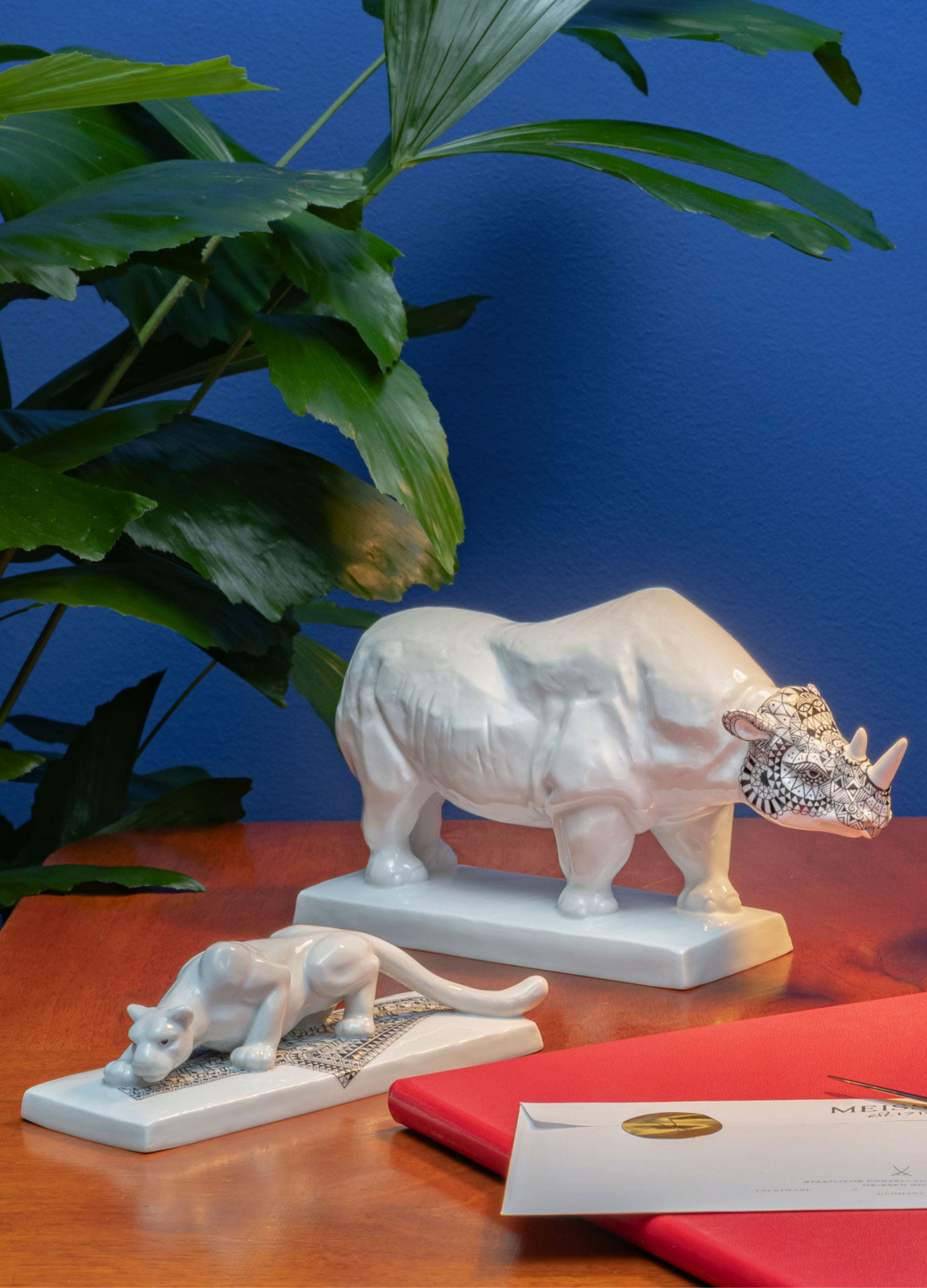 Big FiveThough the Meissen manufactory has a long history of animal figures, this group from the young sculptor Maximilian Hagstotz marks the first time the Big Five has been realized in a unified style of a single series. Hagstotz found inspiration in the wooden statues of Africa to create angular, almost carved-looking designs that are free from a purely naturalist representation, with a unique expressiveness that captures the strength of the five different animals. The elaborately painted decorations of the series demonstrate both an artistic engagement with the theme of Africa’s Big Five and a dedication to consummate craftsmanship. Inspired by traditional patterns and replete with symbolic power, the decorations stand out in contrast against the white of the porcelain. The restrained application of these patterns and the filigree lines accentuate the unique traits of each animal.
Big FiveThough the Meissen manufactory has a long history of animal figures, this group from the young sculptor Maximilian Hagstotz marks the first time the Big Five has been realized in a unified style of a single series. Hagstotz found inspiration in the wooden statues of Africa to create angular, almost carved-looking designs that are free from a purely naturalist representation, with a unique expressiveness that captures the strength of the five different animals. The elaborately painted decorations of the series demonstrate both an artistic engagement with the theme of Africa’s Big Five and a dedication to consummate craftsmanship. Inspired by traditional patterns and replete with symbolic power, the decorations stand out in contrast against the white of the porcelain. The restrained application of these patterns and the filigree lines accentuate the unique traits of each animal. -
 Fairy-tale FigurinesThe “Fairytale” collection is Peter Strang’s expressive interpretation of classic Brothers Grimm characters and themes. Strang’s sculptures translate the at times sinister appeal of the traditional tales into cheerful figurines with childlike simplicity, reminiscent of sketches from an artist’s atelier. The use of simple, geometric figures – beads for hair, cubes and rectangles as torsos, and oblongs for hands – sets the distinctive style of the collection, which finds its inspiration in expressionist painting. Right down to the detailed brushwork that leaves individual strokes discernible, the diligent craftsmanship and almost childlike decorations emphasize the cheerful character of the fairytale figures.
Fairy-tale FigurinesThe “Fairytale” collection is Peter Strang’s expressive interpretation of classic Brothers Grimm characters and themes. Strang’s sculptures translate the at times sinister appeal of the traditional tales into cheerful figurines with childlike simplicity, reminiscent of sketches from an artist’s atelier. The use of simple, geometric figures – beads for hair, cubes and rectangles as torsos, and oblongs for hands – sets the distinctive style of the collection, which finds its inspiration in expressionist painting. Right down to the detailed brushwork that leaves individual strokes discernible, the diligent craftsmanship and almost childlike decorations emphasize the cheerful character of the fairytale figures. -
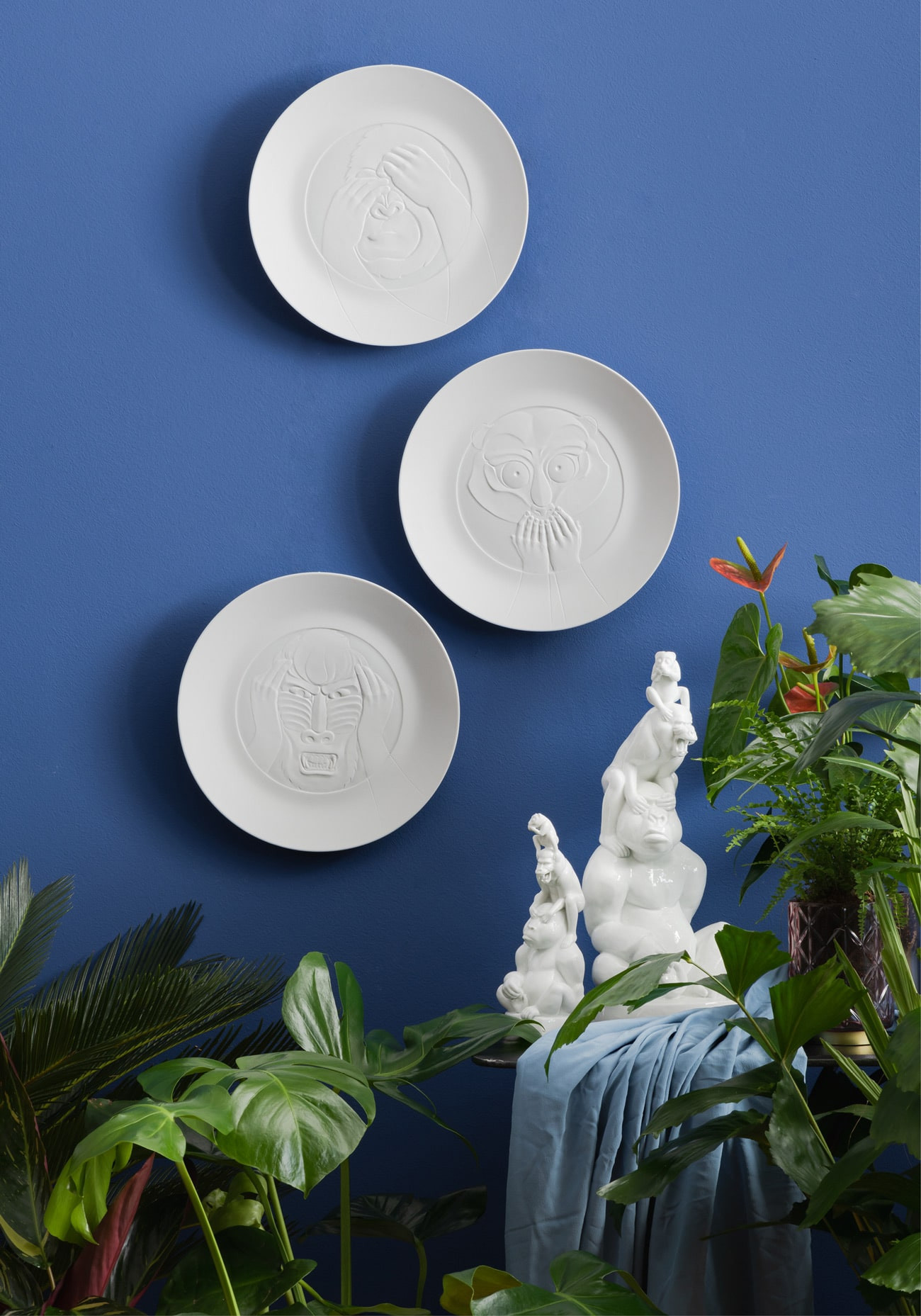 Meissen AtelierBoth in-house and outside artists are invited to MEISSEN to explore the possibilities of porcelain. Together with Meissen’s creative directors, they push the manufactory forward creatively
Meissen AtelierBoth in-house and outside artists are invited to MEISSEN to explore the possibilities of porcelain. Together with Meissen’s creative directors, they push the manufactory forward creatively -
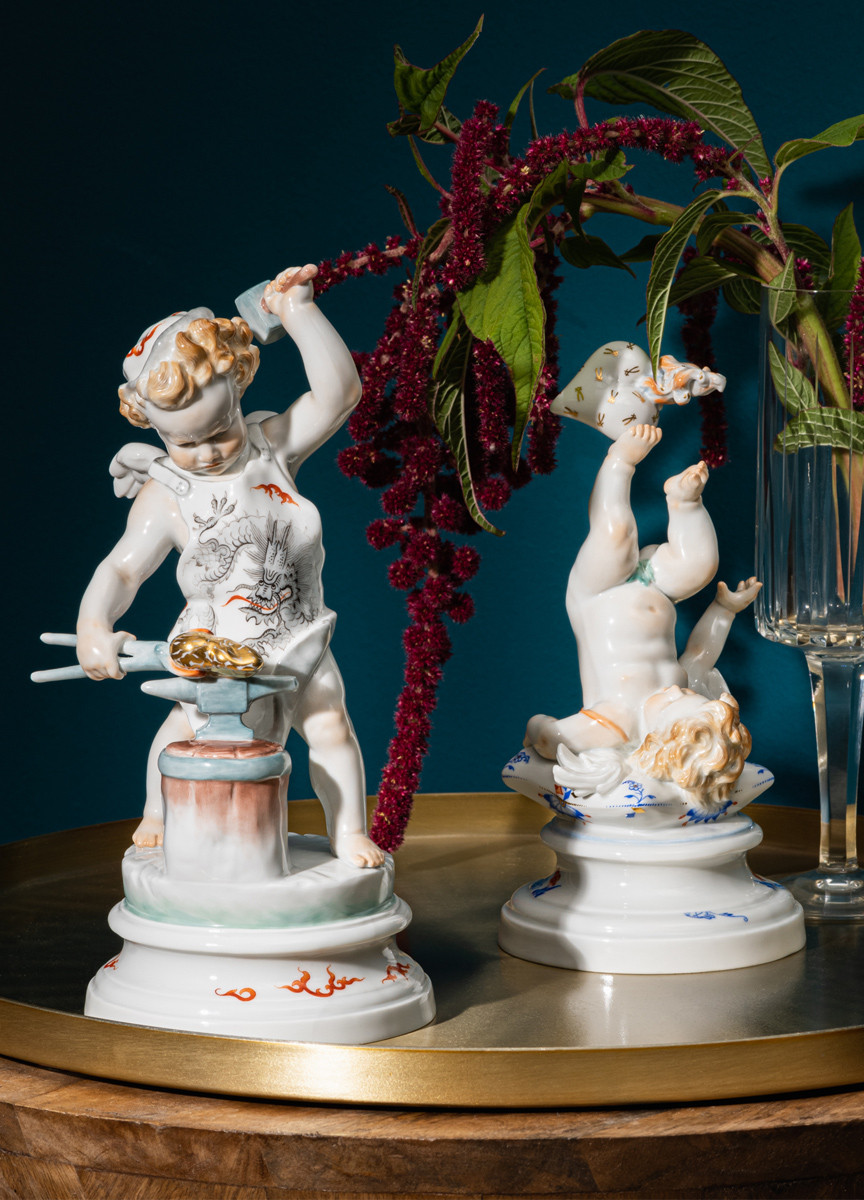 Cupid FigurinesDepictions of Cupid and angels have been an integral part of Meissen's creative repertoire since the mid-18th century and are still very popular today. Following the presentation of "Cupid with Shirt Meissen Decorative Worlds", four more Cupid figurines have now been added to this series.
Cupid FigurinesDepictions of Cupid and angels have been an integral part of Meissen's creative repertoire since the mid-18th century and are still very popular today. Following the presentation of "Cupid with Shirt Meissen Decorative Worlds", four more Cupid figurines have now been added to this series. -
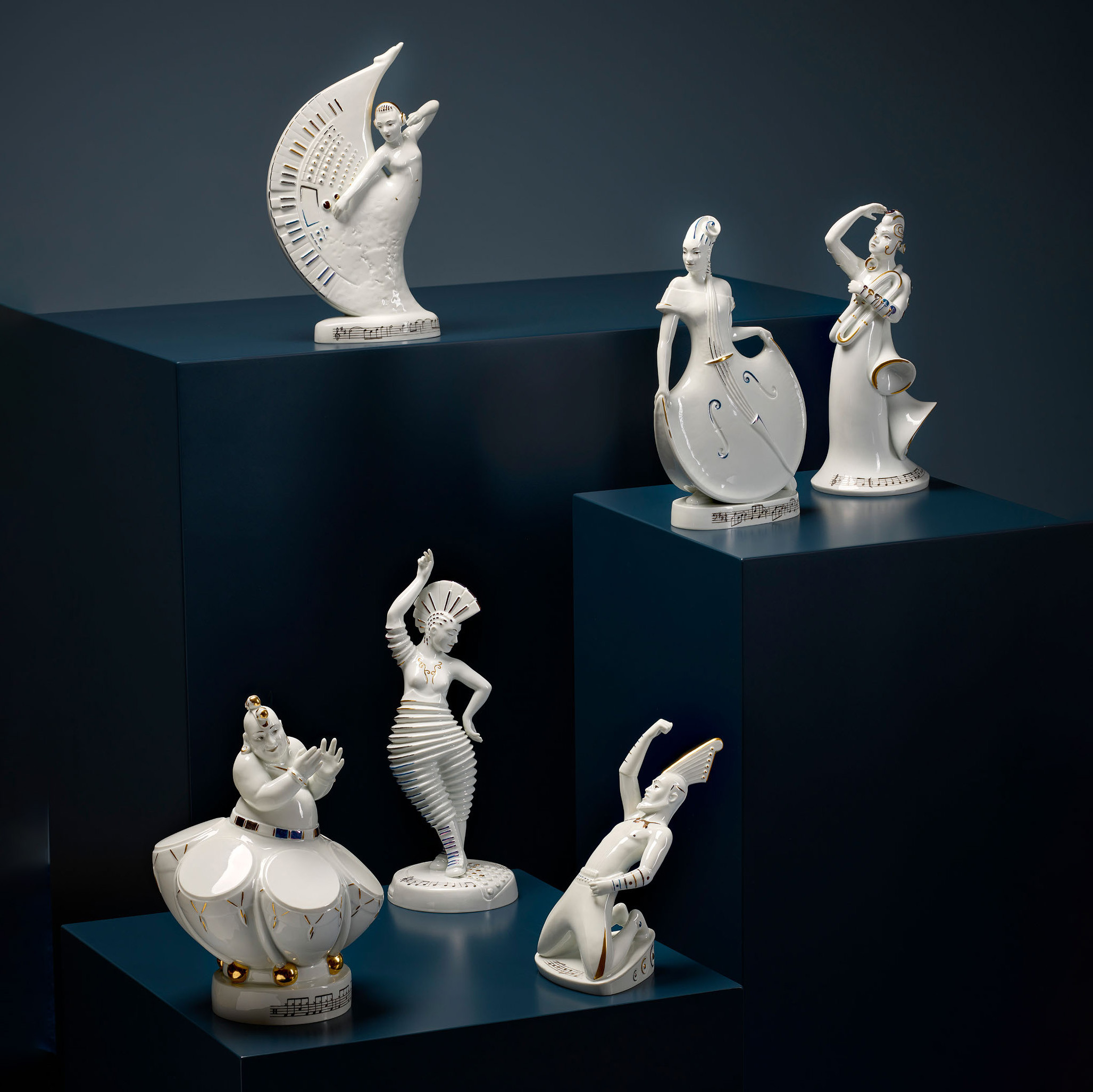 Orchester CuriosityWith the ORCHESTER KURIOSUM, the artist Maria Walther has once again succeeded in transporting the viewer of her works into her thoughts. Her series of figures tells of devoting oneself to a passion with the greatest passion. The protagonists of her work - Sia Monica, Pierre Cussion, Viola da Gamba, Jay Tarro, Synthia and Tom Peter - feel so close to their instruments that they have merged with them. The artist was inspired by Asian mythology, according to which fantastic beings are said to animate objects, and the question of what kind of being her accordion might be - the idea for Sia Monica was born.
Orchester CuriosityWith the ORCHESTER KURIOSUM, the artist Maria Walther has once again succeeded in transporting the viewer of her works into her thoughts. Her series of figures tells of devoting oneself to a passion with the greatest passion. The protagonists of her work - Sia Monica, Pierre Cussion, Viola da Gamba, Jay Tarro, Synthia and Tom Peter - feel so close to their instruments that they have merged with them. The artist was inspired by Asian mythology, according to which fantastic beings are said to animate objects, and the question of what kind of being her accordion might be - the idea for Sia Monica was born. -
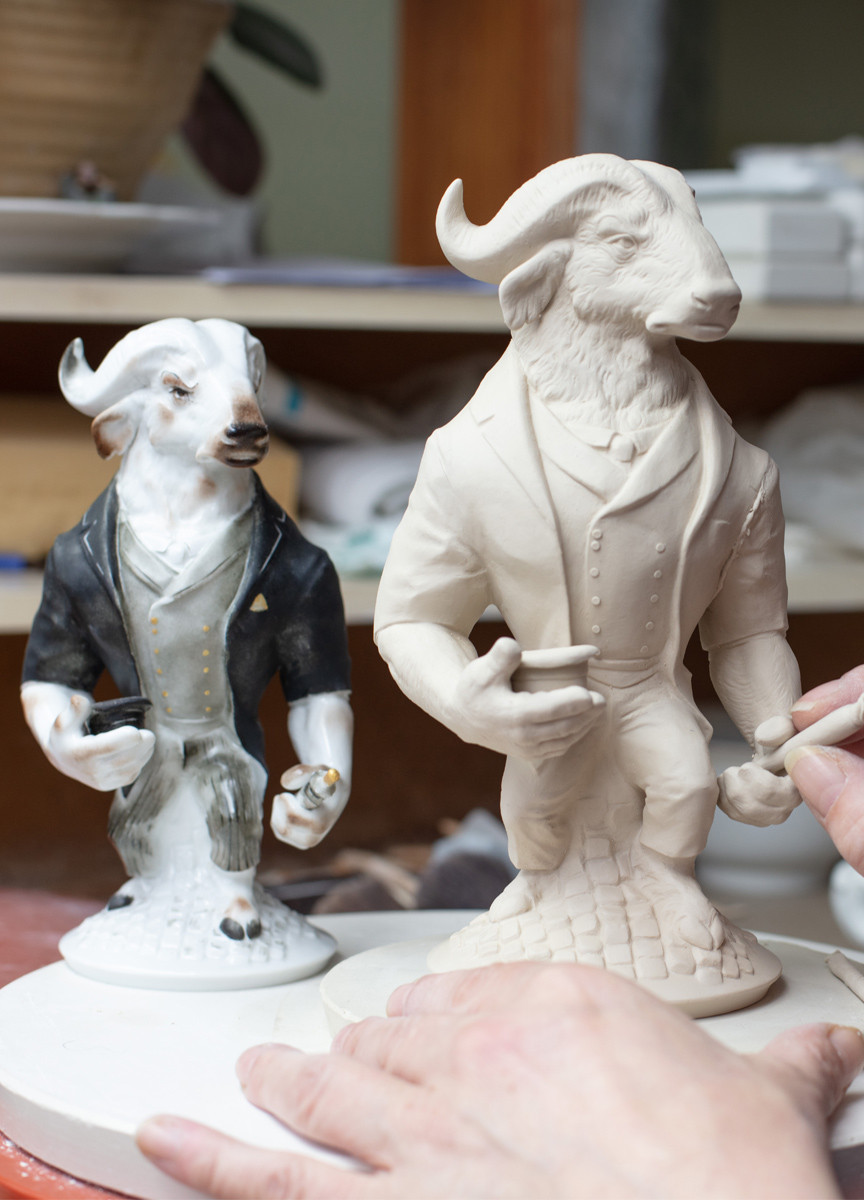 Ladies & GentlemenFor his series of figures LADIES & GENTLEMEN, artist Maximilian Hagstotz reminds us of the values of human interaction. Values such as patience, punctuality and respect, which are unfortunately losing value in society due to modesty, are embodied in the animal depictions. Ladies & Gentlemen are intended to remind people to treat each other with respect and patience and to value each other's time.
Ladies & GentlemenFor his series of figures LADIES & GENTLEMEN, artist Maximilian Hagstotz reminds us of the values of human interaction. Values such as patience, punctuality and respect, which are unfortunately losing value in society due to modesty, are embodied in the animal depictions. Ladies & Gentlemen are intended to remind people to treat each other with respect and patience and to value each other's time. -
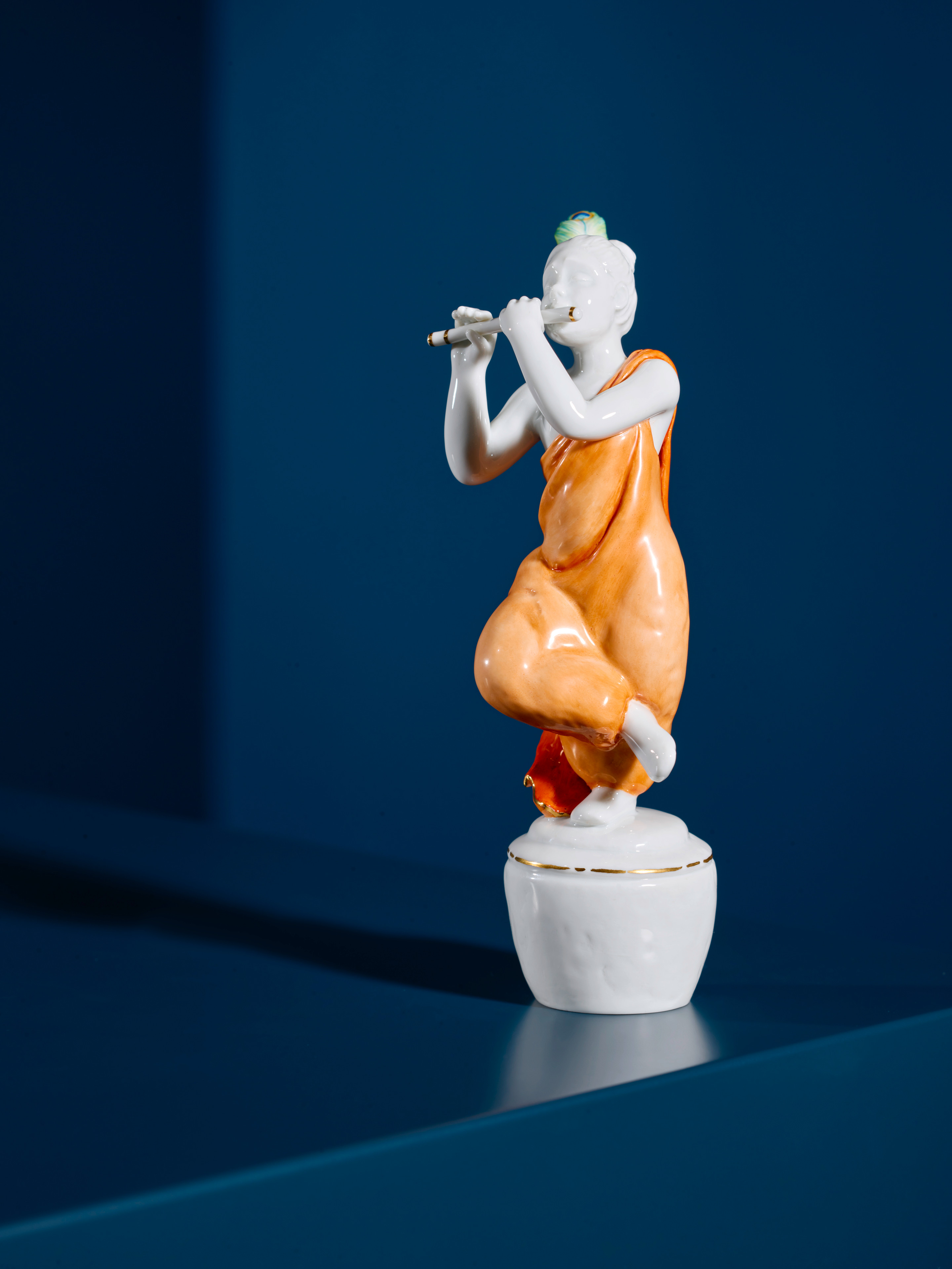 Esoteric figuresMaria Walther's works of art create a fascinating world full of symbolic power and unexpected stories from Meissen porcelain. The design of these deeply symbolic figures is reduced to the absolute essentials and at the same time plays with the limits of possibilities in porcelain design. With her works of art, Maria Walther wants to encourage people to pause and reflect. When designing her sculptures, the artist attaches great importance to opening up new perspectives for the viewer with her work.
Esoteric figuresMaria Walther's works of art create a fascinating world full of symbolic power and unexpected stories from Meissen porcelain. The design of these deeply symbolic figures is reduced to the absolute essentials and at the same time plays with the limits of possibilities in porcelain design. With her works of art, Maria Walther wants to encourage people to pause and reflect. When designing her sculptures, the artist attaches great importance to opening up new perspectives for the viewer with her work.
Campaigns
-
01
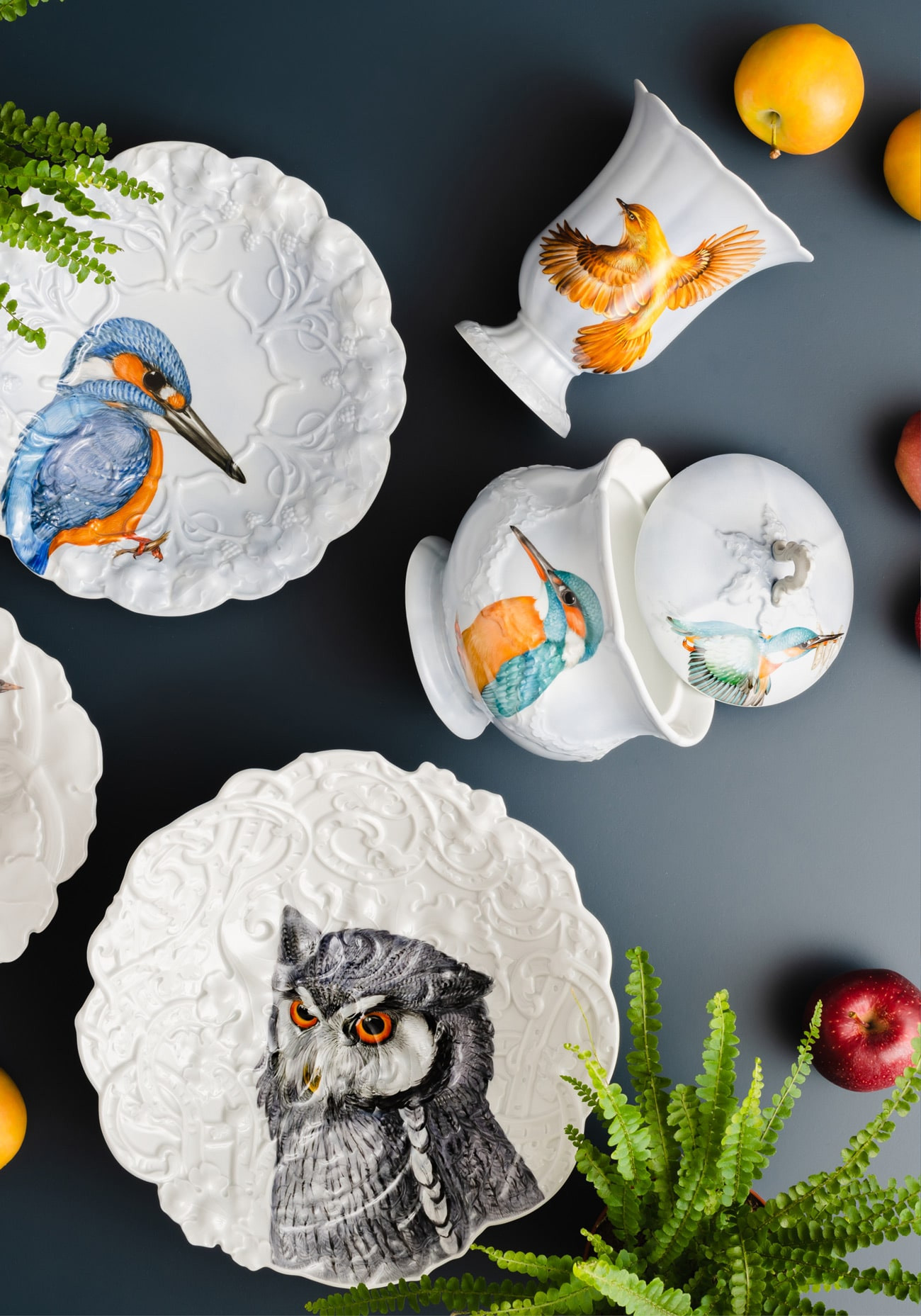 New SplendourA series of 19th-century decorative objects awakes from the archive, lavishly embellished with a contemporary rim-to-rim floral décor
New SplendourA series of 19th-century decorative objects awakes from the archive, lavishly embellished with a contemporary rim-to-rim floral décor -
02
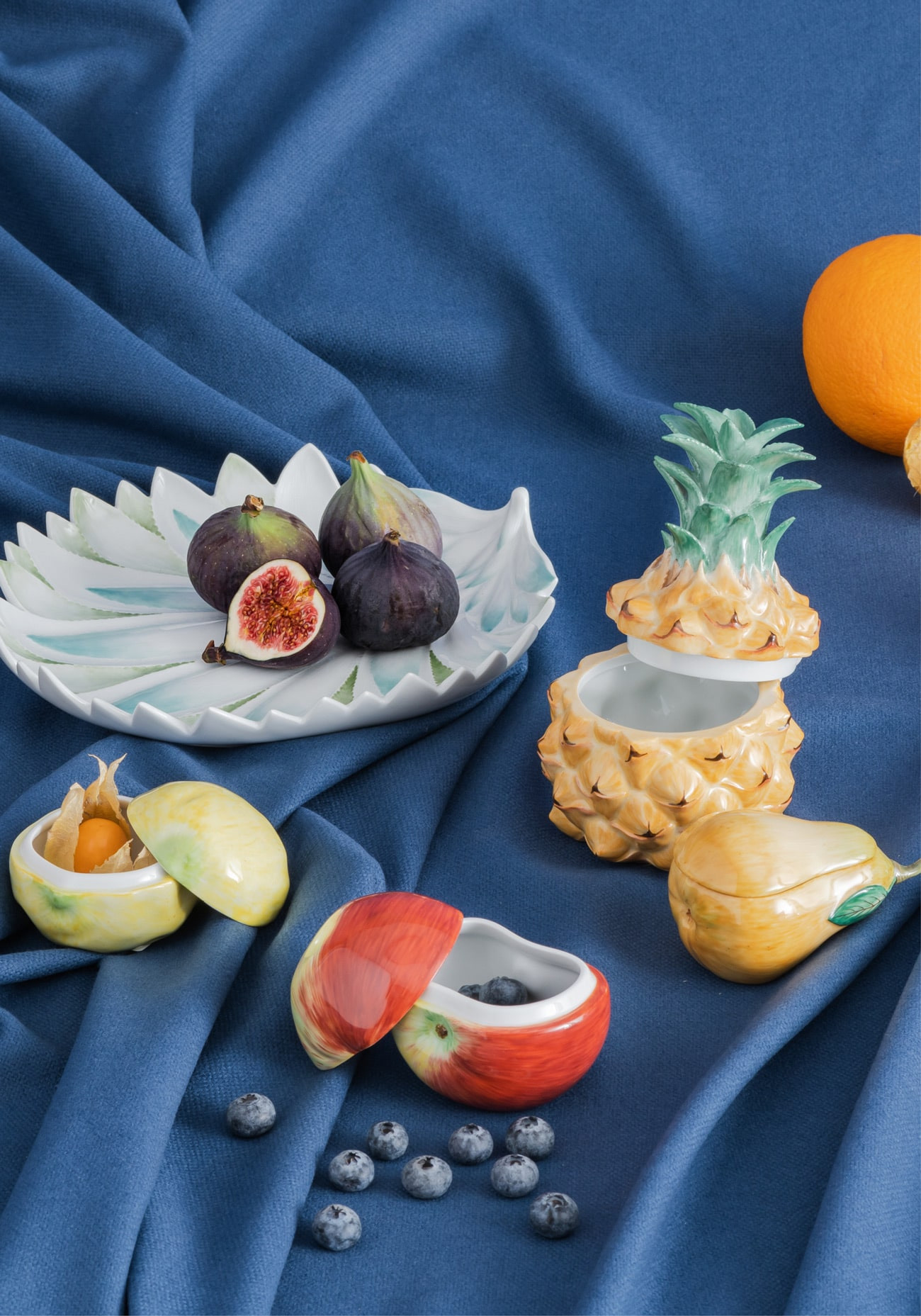 OrangeryFull-cover matt colours or boldly arranged geometric gilding – A series of historic Baroque-era boxes is given fresh coats of paint, in "Orangery"
OrangeryFull-cover matt colours or boldly arranged geometric gilding – A series of historic Baroque-era boxes is given fresh coats of paint, in "Orangery"






